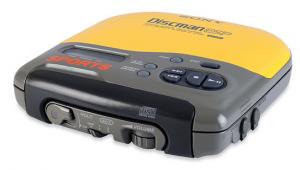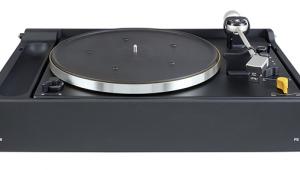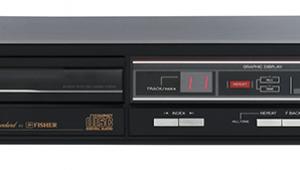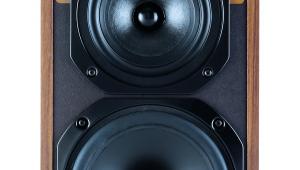DPA DSP-200S/DPA-200S Preamp/Amp

 Rising phoenix-like from the ashes of Deltec Precision Audio in 1992, the 'continuity brand' DPA retained designer Robert Watts' flair for innovation. How does it fare today?
Rising phoenix-like from the ashes of Deltec Precision Audio in 1992, the 'continuity brand' DPA retained designer Robert Watts' flair for innovation. How does it fare today?
The story of DPA is not uncommon among small and specialised hi-fi manufacturers. Arriving in 1992, it actually represented the second iteration of a company co-founded by Robert Watts (who has since gone on to be digital design consultant at Chord Electronics). And while Deltec Precision Audio, which debuted in 1984 with its CTA80 preamplifier, had ultimately shut up shop in the early '90s, the ideas behind its original models clearly had some merit – it was soon back with Watts onboard, albeit under a slightly different name.
One of the first products released was a new pre/power system. Composed of the DSP-200S preamplifier and the buyer's choice of one or two DPA-200S power amplifiers (a single DPA-200S would give 2x50W, while two running in bridge mode would give a total of 200W, hence the '200' in the name), it evolved from the previously released '50' models of Deltec but represented an improvement in a number of ways. Most importantly it was cheaper despite being no less powerful – the DSP-200S cost £450 and the DPA-200Ss were £750 each. They were also smaller, neater and better finished, and the sound of the combination had been re-voiced to be less 'stark' – some had felt the DPA-50S had been too dry and lacking in bass weight.
The most interesting technical change was that the four core loudspeaker cables with sensing wires brought out to the loudspeaker terminals of the DPA-50S (essentially a re-working of Trio's 'Sigma Drive' system from about a decade previously) were dispensed with in favour of a more conventional arrangement where the feedback loop was completed inside the amplifier's cabinet. This meant that special Deltec loudspeaker cables were no longer necessary and the chances of damaging the amplifier through incorrect connections were greatly reduced. The downside to this economising was that there was no longer a phono stage inside the preamplifier. For those with LP-based systems, the matching DSP-200D phono stage was made available, although the interest in digital sources at the time meant that few were made.

Short And Sweet
The DPA-200S power amplifier included in its design some unusual technical features. A key aim was the reduction of susceptibility to RF interference, and for this reason miniature surface-mounted (SMD) components were used wherever possible to keep signal path lengths short. This was a largely unexplored technique in consumer audio at the time, outside certain specialised areas such as portable CD players. One of the problems was that many of the critical parts for high-quality amplification (such as high-grade film capacitors and large wattage resistors) were not obtainable in surface-mounted form. DPA's designers got around these problems by using conventional leaded capacitors in certain key positions, and connecting a number of small resistors together to make one larger one where a lot of power had to be dissipated. Effective screening was also pursued through the use of enveloping metal cabinets made from heavy-gauge material. This was a definite improvement over the plastic and chipboard used by some of DPA's rivals.
Another highlight was the use of Deltec's hybrid operational amplifier, the DH-OA32, as the gain and feedback stabilisation element in each channel. This was built on a highly stable ceramic substrate where the track work and the resistors were formed using special conductive paints, a technique known as the 'thick film' method. The other SMD-type components were then soldered in place to complete the module. Such engineering was already common in TV sets and video recorders, but its use in quality audio was novel (although not completely new – as the DSP unit inside Technics' mid-1980s SL-P3 CD player [HFN Sep '22] illustrated).
Power Pusher
The rest of the amplifier followed the pattern set by the DPA-50S. It used four output transistors per channel in a DC-coupled class A/B2 circuit. Two mains transformers were fitted, one of which fed the positive side of the power supply and the other the negative. These were shared by both channels.

The DSP-200S preamp was a simpler affair, although it was still largely constructed from SMD components. All five inputs had the same sensitivity and gain, the maximum being around +12.5dB at the full volume setting. The tape loop was buffered at the output, showing that the designers took this feature seriously. Active components in the DSP-200S were conventional operational amplifier chips rather than Deltec's hybrid modules, a compromise made necessary to meet the target price. Signal routing was performed electronically, the only moving contacts in the signal path being those inside the volume control.
Looking Good
This pre/power's styling is something of a success. Despite the simple construction, the units appear discreetly expensive and clearly the possession of a serious listener. Everyday operation could have been made easier in a number of ways, however: there is no 'standby' mode on either model, and mains switches on both are small and hidden away at the back. DPA recommended that they be left switched on all the time, but to do this now with a 30-year-old amplifier with minimal internal fusing strikes me as foolhardy.























































